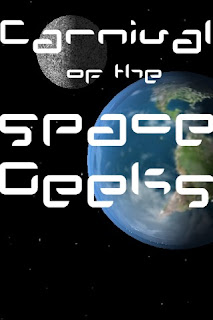I packed my bags to head off world,
To live beyond the sky that twirls,
Around the planet of my birth,
The one I call home--aka Earth.
But when I arrived on that new planet,
I left in a hurry as I could not stand it.
It was not the gravity, or the radiation,
It was the stench of that wretched habitation.
We are a unique species. We spend billions of dollars in order to launch satellites to orbit distant worlds (or rovers to explore across their surface) in order to bring back images of what the horizon may look like on another planet (or Moon).
Often, we imagine what it must be like to live on the red planet, or dance through the smog world of
Titan, or even (if we are lucky) what it would be like to have a picnic on the Moon.
Unfortunately, our dreams of humanity expanding throughout our native star system may ultimately come to naught, due to the simple fact that living off world may irritate one of our key bodily members, also known as the nose.
Despite the romantic images off the dozens of worlds that dance around their paternal planets and stars, the reality is that many of these rocky spheres have unique odors to them, which may be encountered after a future settler returns to the outpost (after exploring the surface of their new home).

One prime example of this is the Moon, in which astronauts reported as smelling
like gun powder after tracking in lunar dust from the outside.
Even though this scent may please those associated with the
NRA, it may irritate would be lunar residents, convincing many that the view of the stars is not worth dealing with the smell of the lunar dust.
If one thought the smell of gun powder is bad, then they may have second thoughts about living on Mars after discovering that the red planet may actually
smell like sulfur.
While many space scientists would probably be willing to deal with the stench in order to live upon a world hundreds of millions of kilometers away from our terrestrial home, most Earthen citizens may choose to simply skip even visiting the crimson planet, opting for a
post card instead.
While these unique smells may not keep some people from abandoning Earth for a new orb to explore, it will (unfortunately) be more than enough to convince the vast majority to stay put on the home world.

Worse, it could also translate to more women avoiding living off world, since their sense of smell
is usually greater than their masculine friends. After all, if women (en masse) decide that off world planets are not worth the "tribulation of the nose," then the only large space settlements humanity may see will
be penial colonies (as prisoners usually have very few rights--at least in most countries).
Since changing the aroma of extraterrestrial soils smells would be difficult (even if one were able to
terraform it), it may be easier (and less expensive) to simply import
air fresheners (or even scented candles where permitted) in order to mask the offending odors entering the space habitats.
While not every world humanity lands on will contain an unpleasant odor (that may make its way into the future outpost), we should do everything in our power to ensure that living off world long term is
not only safe, but a pleasent experience for all five of our senses as well.


















![ColonyWorlds[at]Gmail[dot]com](http://img.photobucket.com/albums/v438/hiddennook/ColonyWorlds.png)






